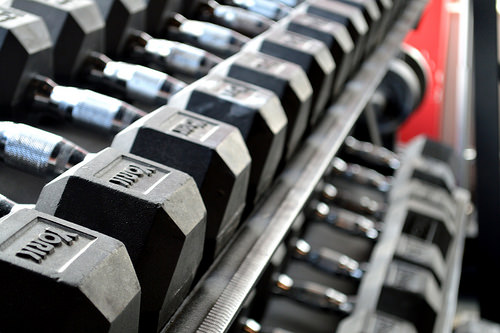- You are here:
- Home »
- Blog »
- Training »
- 8 Alternatives to Lunges
8 Alternatives to Lunges
 Photo By: Aberro Creative
Photo By: Aberro Creative
Whether you have just been doing lunges for too long and are sick of them or you can’t do them for a health reason, it is good to add some variety. Below are some exercises that can be alternatives to lunges.
Lunges target all of the major muscle groups in the legs, such as quadriceps, glutes, and hamstrings. If you are looking for a substitute, you would obviously want to target those same muscles, which all of the exercises below do.
For those of you who need a replacement for injury or health reasons, make sure to get clearance from a health professional before trying anything new.
Variations of Lunges
You can still perform a traditional lunge and still be doing a different exercises.
- Dumbbell Lunge – This is the most common lunge, and probably the one you are doing. You just grab 2 dumbbells, 1 in each hand, hold them by your side, and lunge. That’s easy enough.
- Barbell Lunge – With this, you load up the bar with weight you can handle and un-rack the weight as if you are preparing to squat. Rather than squatting, obviously, you lunge. You won’t be able to do as much weight as you can when you squat, so start very conservatively.
- Overhead Lunge – This is a very advanced move that many people can’t perform well. To do this, you will want to start with a very conservative weight. I’d recommend starting with just the barbell for men and a light dumbbell for women. If you use a barbell, you hold the bar overhead, as if in a snatch position, and lunge from there. If you have a dumbbell, simply hold it directly overhead. Make sure you keep the core stable and whenever you are holding any weight overhead, make sure it is something you can absolutely handle.
Advanced Lunges
- Reverse Lunge – It’s somewhat amazing how just doing the opposite can make an exercise so harder. As the name implies, the movement begins by stepping backwards instead of forwards. This sounds easy enough, but you’ll soon realize that this places a much different stress and stimulus on your lower body.
- Lunge Jump – This is a pretty advanced plyometric that you should only try if you are already in pretty good shape and decently strong. To do this, you lunge forward with 1 leg. When you get to the bottom position, you jump up explosively into the air, and switching legs so you land in a lunging position with the opposite leg forward. Repeat, and that is 1 rep. You can see a demonstration of this exercise in the video below. Perform these with just sets of 3-5 if you are new to them and give yourself plenty of rest.
Alternatives to Lunges
Step Ups
Step ups can be performed with dumbbells or barbells. A sturdy chair or bench usually makes a great height to be used for these. This works the knee in a way very similar to how lunges do. With step ups, you literally step up, with 1 leg at a time, to the bench or chair. You can see an example in the video below. Dumbbells would be held by your side, and a barbell would be on your back as it is during the squat.
Goblet Squats
Goblet squats can be done with a dumbbell or kettlebell. With these, you hold the dumbbell or kettlebell close in front of your chest, with your elbows pointed down towards the ground. You then perform a deep squat. Your elbows should go inside of your knees. Check the video below for a demonstration.
Hill Sprints
If you use lunges for endurance and conditioning, as opposed to strength training, hill sprints are a viable alternative. Choose a steep hill, but one that isn’t too long. Perform repeat sets of hard sprints up the hill, walking down slowly to give yourself plenty of time to recover. These are great for both strength and conditioning.
Recap
Any of these exercises can be performed with sets and reps similar to what you are performing now with lunges, with the exceptions being jumps, which should be done with fewer reps. You should switch up these lifts every 3-4 weeks so your body continues to progress.
There are many more alternatives to lunges that you can find out there. There is no best exercise to perform exactly. The most important part is that you consistently change up your exercises, weights, and rep schemes so you can continue to challenge yourself and make progress.

